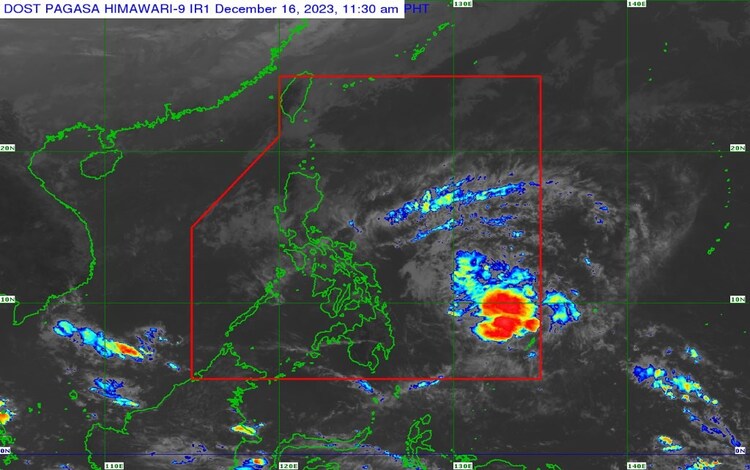On Saturday, December 16, 2023, at noon, the monitored Low Pressure Area (LPA) entered the Philippine Area of Responsibility (PAR) according to PAGASA, the Philippine Atmospheric, Geophysical and Astronomical Services Administration. This is an event that underscores the country’s readiness for any potential rainfall or wind occurrence.

The Low-Pressure Area, which has long been under the watchful eye of weather specialists, has a slight chance of developing into a stronger storm in the next 24 hours. As it enters the PAR, authorities intensify their monitoring to ensure the safety of the citizens. However, based on current reports, there is only a slight possibility that it will become a typhoon.
With the convergence of cool and warm air in the atmosphere, conditions conducive to rain and wind may arise. PAGASA provides crucial information and warnings to maintain the safety of everyone. In connection with this, PAGASA also conveys recommendations to the public, such as precautions during rainfall and the importance of having a ready emergency kit.

In being prepared for such situations, the cooperation of everyone is crucial. PAGASA’s announcement regarding the Low-Pressure Area is just one of the steps taken by the government to ensure the safety and well-being of the citizens. Local governments and planning agencies collaborate to maintain readiness and respond to any calamity.
During such times, the cooperation of everyone is vital. Giving importance to PAGASA’s warnings, observing the surroundings, and being prepared for any possible eventuality are essential aspects of ensuring safety. This is not just the responsibility of authorities but of the entire community.

In summary, the entry of the Low-Pressure Area into the Philippine Area of Responsibility emphasizes the importance of preparedness and cooperation. Through careful observation, understanding of expert warnings, and collaboration of everyone, we can better face any challenges posed by nature.
I
